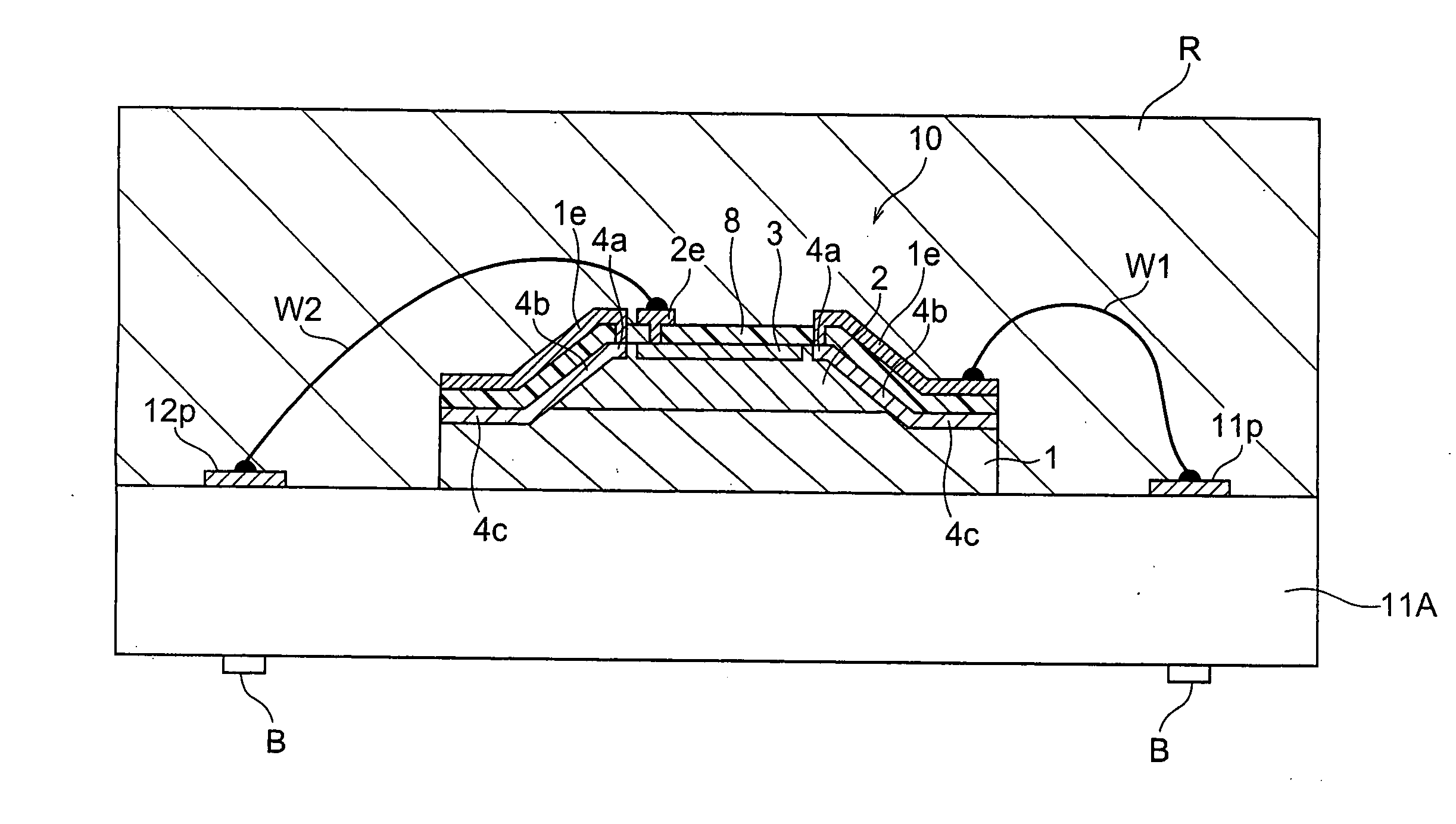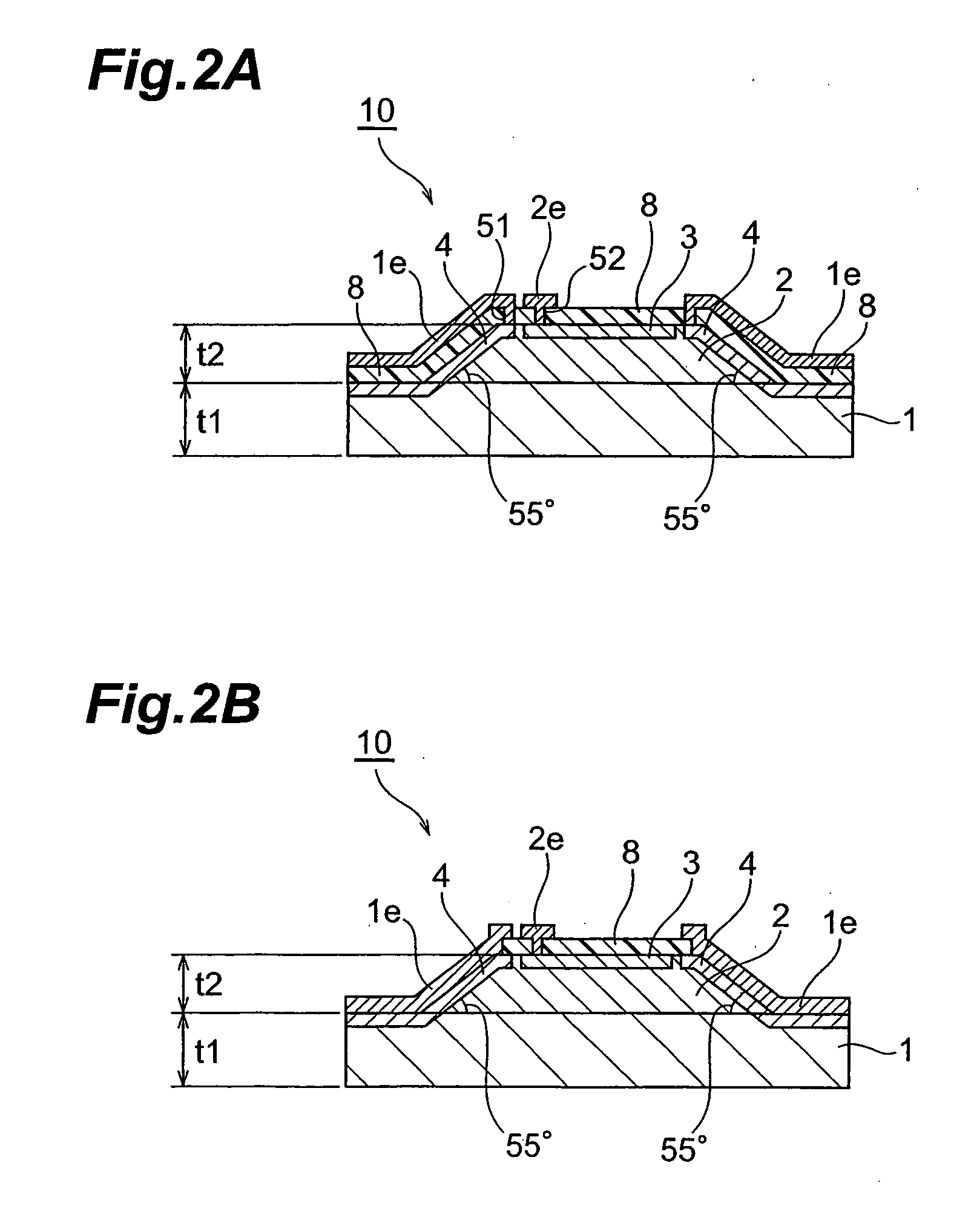Semiconductor photodetector and photodetecting device
a technology of photodetector and semiconductor, applied in semiconductor devices, solid-state devices, electrical devices, etc., can solve the problems of inability to maintain high-speed response characteristics, low photodetection sensitivity, and inability to spread the depletion layer easily, and achieve high-speed response characteristics.
- Summary
- Abstract
- Description
- Claims
- Application Information
AI Technical Summary
Benefits of technology
Problems solved by technology
Method used
Image
Examples
Embodiment Construction
[0033]FIG. 1 is a plan view of a photodetector according to an embodiment. FIG. 2A is a sectional view taken on arrows II-II of the photodetector shown in FIG. 1.
[0034] This semiconductor photodetector 10 has an N-type (first conductive type) first semiconductor substrate 1 of low resistivity, an N-type second semiconductor substrate 2 of high resistivity, and a P-type (second conductive type) impurity-added region (semiconductor region) 3. Here, “high resistivity” and “low resistivity” shall signify a relative relationship between resistivities. That is, second semiconductor substrate 2 has a higher resistivity than first semiconductor substrate 1. The impurity concentration is relatively low in the case of high resistivity and the impurity concentration is relatively high in the case of low resistivity.
[0035] The resistivity of first semiconductor substrate 1 is, for example, approximately 0.001 Ω·cm. The resistivity of second semiconductor substrate 2 is, for example, approxima...
PUM
 Login to View More
Login to View More Abstract
Description
Claims
Application Information
 Login to View More
Login to View More - R&D
- Intellectual Property
- Life Sciences
- Materials
- Tech Scout
- Unparalleled Data Quality
- Higher Quality Content
- 60% Fewer Hallucinations
Browse by: Latest US Patents, China's latest patents, Technical Efficacy Thesaurus, Application Domain, Technology Topic, Popular Technical Reports.
© 2025 PatSnap. All rights reserved.Legal|Privacy policy|Modern Slavery Act Transparency Statement|Sitemap|About US| Contact US: help@patsnap.com



